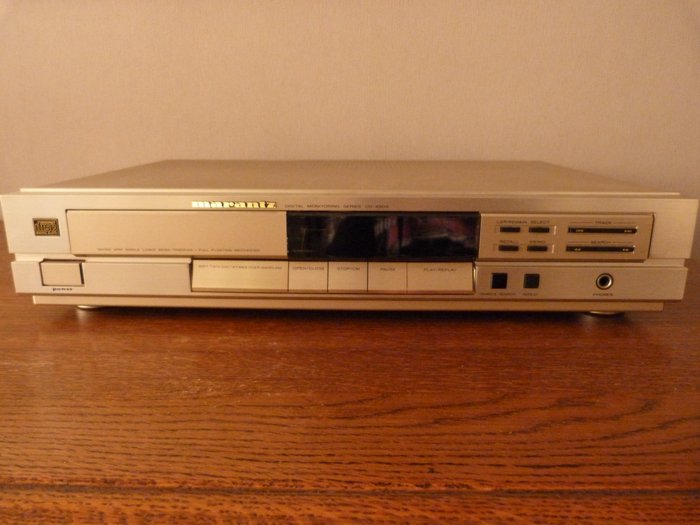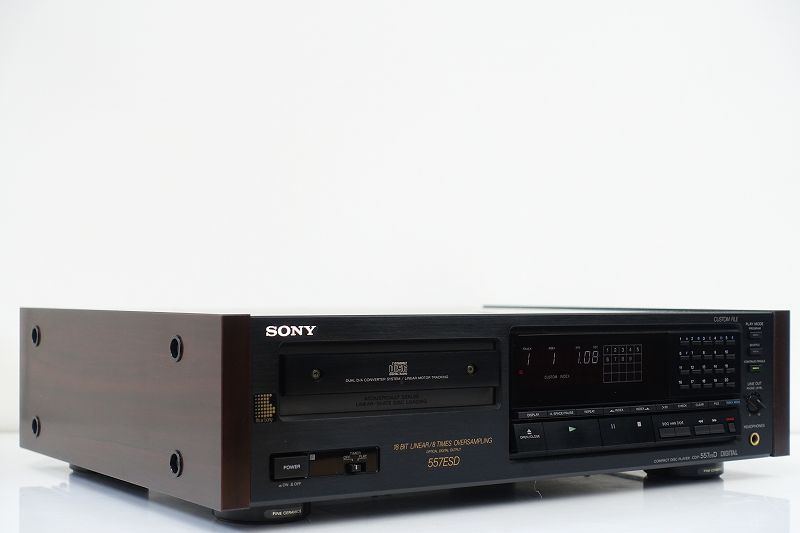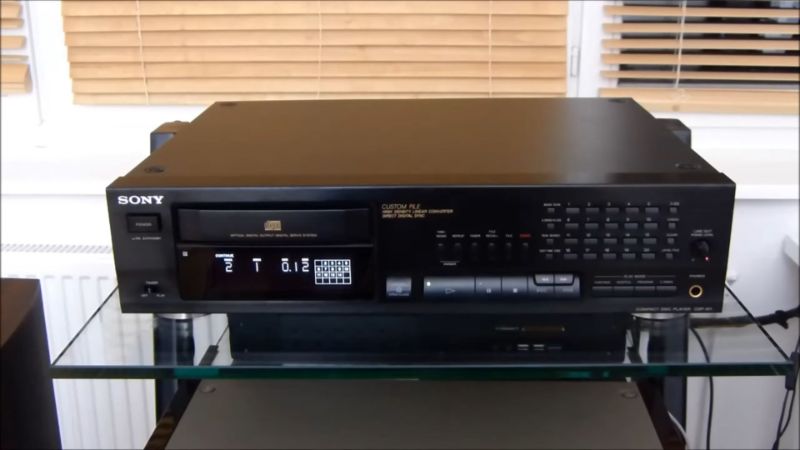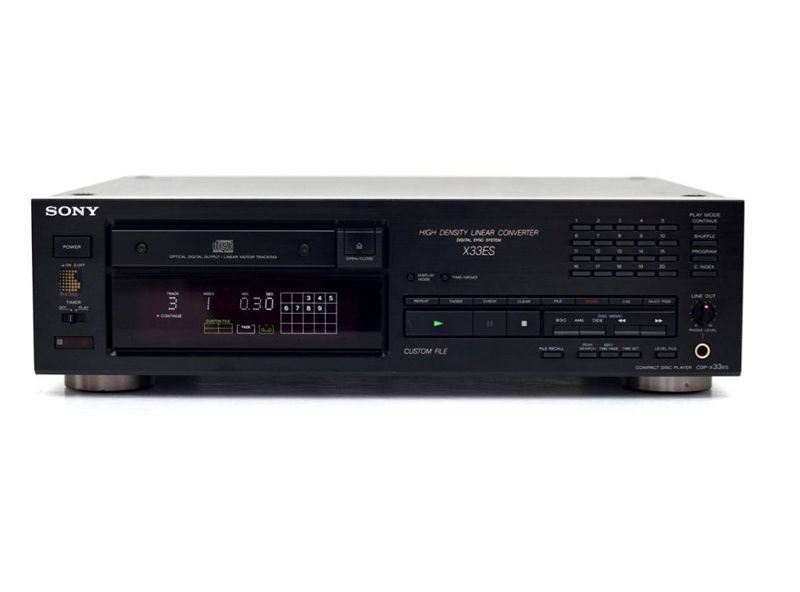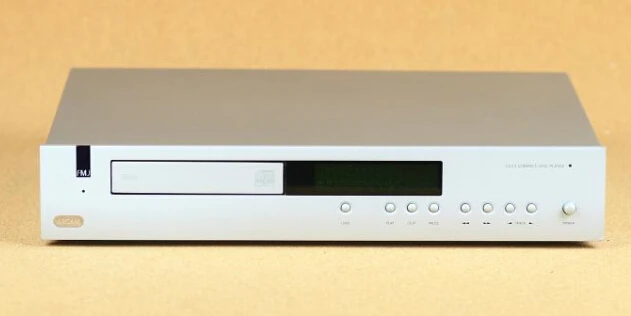Despite the Marantz refinements and a bit of their design, this is a Philips machine that comes from their Hasselt, Belgium CD player facility. It makes use of a later version of Philips’ CDM4 plastics mechanism, which has progressed from its early flimsiness to become fairly respectable, with a solid metal hub for the disc motor and a weighted chuck to keep the revolving disc in place.
However, this mechanism is still somewhat noisy, both during loading and when playing, though much of the latter can be attributed to the polystyrene cabinet housing’s poor acoustic isolation. A thin damping pad glued to the bottom of the top of the steel cover may have been used to try to improve things. By today’s standards, both the loading and the track shift are quite slow, taking four seconds to engage a late track. The laser assembly has undergone significant changes, yet it still uses the company’s pioneering swinging arm linear motor mechanism. The tray has been recessed to accommodate the new 80mm 20-minute CD single discs, and the entire playing platform has been elegantly floating to provide effective shock isolation.
The rest of the casework is made up of a molded plastics tray with elegantly interlocking projections that engage the different pieces, including the one hefty item, the skeletal mains transformer. The power on/off push-switch button is located to the left of the disc drawer on the front panel, which is made of black anodized aluminium. The actual switch is actuated by a push rod and is located next to the power transformer’s mains input socket. The location of the fuse holder and voltage adjuster at the far end of the rear panel negates this admirable compaction; the resulting twist of unscreened cabling at mains potential passes an inch or two above the entire audio section.
The timing display window is somewhat to the right of center, and the information it contains is shown in a bright blue/green color. There are also a few indicators that appear to remind you that you’ve used particular choices. The main control keys are below this window, with the less often used ones grouped to the right above the headphones socket; the latter has no volume control, but the source impedance has been set to equal out any level discrepancies that may occur with headphones of differing characteristics.
Additional features are accessed using the included remote control handset; it is well-designed, but a brighter typeface would have been preferable, especially because I found the handset to be far easier to operate than the machine’s oddly bent keys. Internal inspection reveals a significant amount of spare space in this standard width machine, implying that midi machines were also in mind when it was designed. Almost everything is concentrated on a single copper-plated, double-sided printed circuit board, and the low component count initially throws one off.
The underside (with the print on) of the board is generously sprinkled with SMCs (surface mounted components), which are tiny resistors and capacitors that are machine attached to the board before the solder dip to achieve the latest in automated production. The TDA1541 converter included in this machine has an A suffix and maintained good linearity all the way down to the 90dB level on the test disc, where the error was only I dB.
Early versions would seldom attempt to resolve such a small signal at all, and it wasn’t until I started monitoring the obviously picked samples used, for example, by Sony a few years ago that I realized the full potential of this brilliant design. Other measurements taken on this CD-65 were mostly in line with the specs, however the signal to unweighted noise ratio was far lower than the value mentioned, which is probably CCIR weighted despite the fact that it doesn’t indicate so.
In addition, when the machine is in rest mode, the noise background is around 6dB louder than when it is in play mode, and a further 3 or 4dB occurs when the mains plug in the rear socket is reversed; this can only be heard if the volume is set to a relatively loud listening level. This machine features a digital output socket, which is protected by a shorting plug when not in use; its absence causes a few mild high-frequency spikes in the output, which are completely safe. A two-core reversible mains lead and a nice stereo phono-to-phono lead are also included with the CD-65.
The listening tests revealed a well-balanced, but slightly constrained, output from this machine. Although not emaciated, the extreme deep bass was tamed and less dramatic than it could be. There was a propensity to produce a less-than-definitive performance as you progressed up the scale. This player muted and denatured George Shearing’s rapid piano introduction on Gershwin’s “Love strolled in” (MPS 833 284), and on many discs, a recognizable acoustic had become indistinct and the background. On the bright side, the treble was free of harshness, and the gritty roughness that many of the less costly players seem to suffer from was absent.
The unobtrusive quality was present at all volume levels and is likely to appeal to a wide range of listeners; nonetheless, it fell short of the sharp clarity that the top players can achieve. One can make a guess that the audio stages that follow the digital conversion in this machine alter the known and measured precision of the digital conversion.
Unfortunately, while it is relatively difficult to incorporate a few better components into the pipeline, it is not practical to make any significant changes to a modern automated production line. As I previously stated, the results are nicely balanced, and the CD-65 provides excellent value for money.

